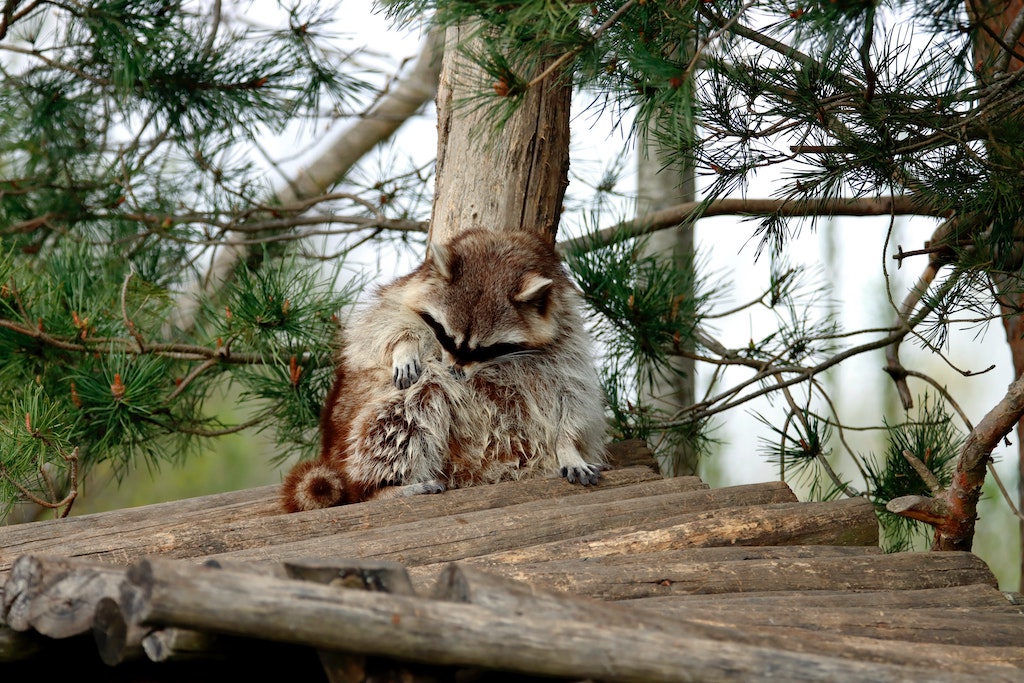Texas, the Lone Star State, is known for its diverse wildlife, scenic landscapes, and beautiful homes. While living amidst nature’s beauty can be a privilege, it also comes with its unique set of challenges. One such challenge is wildlife encounters that can lead to property damage. In this article, we will explore whether Texas home insurance covers animal damage and provide valuable insights into protecting your property from these incidents.
Understanding animal damage coverage and home insurance
When it comes to protecting your Texas home from the unexpected, understand the nuances of your home insurance policy.
Typical home insurance policies
Before diving into animal damage coverage specifics, we need to grasp the fundamentals of standard homeowners’ insurance policies. These policies are designed to safeguard your home and possessions from various risks, commonly referred to as perils. Typical perils covered by most home insurance policies include fire, theft, vandalism, and certain natural disasters like hurricanes or hailstorms.
However, animal-related damage is a category that varies in coverage depending on the specific policy you have. While standard policies are comprehensive, they may only sometimes explicitly address animal damage, leaving homeowners to navigate this aspect with caution.
Common types of animal damage
Animal can damage damage in various ways, often resulting in unforeseen expenses and property deterioration. Understanding these common types of animal damage will help you assess whether your policy provides coverage.
- Roof damage: Some wildlife, like squirrels or raccoons, are adept climbers and can cause damage to your roof by gnawing on shingles, creating holes, or even nesting in your attic. This damage may not only compromise the integrity of your roof but also lead to leaks and subsequent interior damage.
- Chewed electrical wiring: Rodents, such as mice or rats, are notorious for gnawing on electrical wires. This poses a fire hazard and can result in expensive repairs to your home’s electrical system.
- Structural harm: Animals that burrow, like groundhogs or armadillos, can undermine your home’s foundation or create tunnels that weaken your property’s structural integrity.
- Gardens and landscaping: For homeowners who take pride in their gardens and landscaping, damage caused by deer, rabbits, or other foraging animals can be a significant concern. These animals may consume plants, dig up flower beds, or damage trees and shrubs.
Policy exclusions and limitations
While homeowners’ insurance policies aim to provide comprehensive protection, they often come with exclusions and limitations, affecting coverage for animal-related damage. It’s essential to read your policy carefully and be aware of these potential restrictions:
- Specific animal exclusions: Some policies may explicitly exclude damage caused by specific animals, such as rodents or insects. If your policy has such exclusions, damage from these creatures may not be covered.
- Type of damage: Policies may cover certain types of animal damage but exclude others. For instance, your policy may cover structural damage from burrowing animals but exclude damage to landscaping or garden items.
- Negligence: If your insurance provider determines that the damage resulted from negligence on your part, such as failing to address a known animal infestation, they may deny the claim.
- Coverage limits: Even if your policy covers animal damage, it may have coverage limits, which means the insurer will only pay up to a specified amount for repairs or replacements.
- Deductibles: Like other insurance claims, animal damage claims may be subject to a deductible, which is the amount you’re responsible for paying before your insurance coverage kicks in.
The coverage of animal damage in your Texas home insurance policy can be somewhat complex and varies from one policy to another. To ensure you have the coverage you need, it’s vital to carefully review your policy, understand its provisions, and consider discussing any concerns or questions with your insurance provider. Being informed about the coverage and potential limitations will help you make more informed decisions about protecting your home from the unexpected challenges of wildlife encounters.
Specifics of Texas home insurance
Texas, known for its expansive landscapes and diverse ecosystems, presents unique challenges regarding homeowners’ insurance coverage, particularly regarding animal-related damage.
Regional considerations
- Diverse landscapes: Texas spans a vast area with diverse terrains, from the arid deserts of West Texas to the lush forests in the eastern part of the state. As a result, the types of wildlife that homeowners encounter can vary significantly from region to region.
- Rural vs. urban environments: Homeowners in rural areas are more likely to encounter wildlife like deer, armadillos, and coyotes, which may cause different types of property damage compared to those living in densely populated urban areas. For instance, rural homeowners may be at a higher risk of deer collisions, while urban homeowners might face issues with raccoons or squirrels nesting in their attics.
- Coverage options: Depending on your location within Texas, your insurance provider may offer region-specific coverage options tailored to the wildlife challenges prevalent in your area. For example, homeowners in deer-prone regions might have access to policies that include comprehensive coverage for deer collisions.
Unique Wildlife Challenges
- Diverse fauna: Texas boasts an incredibly diverse range of wildlife, including charming, picturesque, and potentially troublesome species. Deer can cause extensive vehicle damage, raccoons may invade your attic, and snakes might find their way into your home. Understanding the wildlife prevalent in your area is key to assessing your insurance needs.
- Seasonal factors: Wildlife behavior can vary seasonally. For instance, certain animals may be more active during breeding or migration seasons, increasing the likelihood of encounters and potential damage.
- Ecological interactions: Texas’ ecosystems are interconnected, and changes in one species’ population can influence the behavior of others. For instance, fluctuations in the rodent population may affect the presence of predators like snakes or birds of prey.
Specialized coverage options
- Endorsements and riders: Given the unique wildlife challenges in Texas, some homeowners may need to consider specialized endorsements or riders to their existing insurance policies. These additions can help ensure adequate protection against animal damage.
- Animal liability coverage: Some insurance providers in Texas offer specific coverage options for pet owners. Animal liability coverage can protect you from related liability claims if you own pets or livestock that could potentially cause harm or damage to others.
- Additional structures: If you have secondary structures on your property, such as barns or detached garages, that are susceptible to wildlife damage, you should explore specialized coverage for these structures.
By considering regional factors, recognizing unique wildlife challenges, and exploring specialized coverage options, you can make informed decisions about your insurance needs and ensure your Texas home remains a secure haven amidst nature’s beauty. Consulting with your insurance provider to discuss these factors and explore available options is a prudent step in tailoring your coverage to your unique circumstances.
Filing an animal damage insurance claim
Dealing with animal-related damage to your property can be a stressful experience. However, navigating the insurance claims process can help ease the burden.
Documenting damage and proof
- Photographic evidence: The first step in filing an animal damage insurance claim is thoroughly documenting the damage. Take detailed photographs of the affected areas, including any structural damage, chewed wiring, or damaged belongings. It’s essential to capture the extent of the damage from multiple angles.
- Preserve evidence: If there are physical remnants of the animal’s presence, such as fur, feces, or tracks, preserve them as potential evidence. These can help substantiate your claim.
- Property inventory: Create a comprehensive inventory of damaged items. Include descriptions, estimated values, and receipts, if available. This will assist your insurance adjuster in assessing the value of your losses.
- Repair and replacement estimates: Obtain estimates from contractors or repair professionals for repairing or replacing damaged structures or items. These estimates will serve as valuable evidence for your claim.
- Keep records: Maintain records of any expenses incurred due to the damage, such as temporary accommodations, boarding up damaged areas, or pest control services. These costs may be eligible for reimbursement.
Contacting your insurance provider
- Prompt notification: As soon as you discover animal damage, contact your insurance provider promptly. Most insurance policies have specific timeframes within which you must report incidents, so it’s crucial to take your time.
- Provide information: When reporting the incident, be prepared to provide detailed information about the damage, including the date and time of discovery, the type of damage, and any relevant circumstances. Having your policy number on hand will also expedite the process.
- Follow instructions: Your insurance provider will guide you through the claims process. Follow their instructions closely, including submitting documentation, filling out claim forms, or allowing an adjuster to assess the damage in person.
- Open communication: Maintain open communication with your insurance company throughout the claims process. Be responsive to requests for information or additional documentation, as this will help expedite your claim.
Home insurance claims process and settlement
- Claims evaluation: After you’ve reported the animal damage, your insurance provider will assign an adjuster to assess the extent of the damage and validity. The adjuster may visit your property to inspect the damage firsthand.
- Claim approval: Once the insurance company evaluates your claim and verifies that it falls within the coverage parameters of your policy, they will approve the claim. You’ll receive a notification outlining the approved amount.
- Settlement: The settlement amount will depend on various factors, including the extent of the damage, your policy’s coverage limits, and any applicable deductibles. Your insurance provider will either provide a check for the approved amount or coordinate directly with contractors or repair professionals to facilitate repairs.
- Review and negotiation: If you believe the settlement amount is insufficient, you have the right to review and negotiate with your insurance company. Providing additional evidence or estimates can help in this process.
- Completion: Once the settlement is agreed upon, repairs and restoration can commence. Ensure that the work is completed satisfactorily and that all repairs meet local building codes and safety standards.
Remember that open communication with your insurance provider is essential throughout this process, and don’t hesitate to seek clarification or assistance when needed.
Preventing animal damage to your property in Texas
In the vast and diverse state of Texas, where wildlife encounters can be a common occurrence, taking proactive steps to prevent animal damage to your property is wise and cost-effective.
Home improvement tips for Texas homeowners
- Secure entry points: Texas is home to a wide variety of wildlife, including raccoons, opossums, and squirrels, skilled at finding their way into homes through small openings. Regularly inspect your property for gaps, cracks, or loose siding that could serve as animal entry points. Seal these openings with appropriate materials to prevent unauthorized access.
- Reinforce vulnerable areas: Pay special attention to vulnerable areas of your home, such as your attic, crawl spaces, and basement. These spaces are often attractive to animals seeking shelter. Use sturdy materials to fortify these areas, making them less inviting to wildlife.
- Use wildlife deterrents: Consider installing wildlife deterrents around your property. For example, motion-activated lights or sprinklers can startle animals and discourage them from approaching your home. Additionally, scent deterrents, like predator urine or ammonia-soaked rags, can deter wildlife from nesting in your vicinity.
Landscaping strategies for Texas properties
- Native plant selection: When landscaping your Texas property, choose native plants and shrubs. Native flora tends to be less appealing to wildlife, as it evolved alongside local animals and may deter them from foraging in your yard.
- Fencing: Installing a sturdy fence can effectively keep certain wildlife, like deer or rabbits, away from your garden or plants. Ensure the fence is tall enough and properly secured to deter animals from jumping over or burrowing under.
- Remove attractants: Avoid leaving pet food or birdseed outdoors, as it can attract wildlife—secure garbage cans with tight-fitting lids to prevent raccoons and other animals from rummaging through your trash.
- Pruning and trimming: Regularly prune trees and shrubs near your home to eliminate potential access points for animals seeking shelter in your attic or eaves.
Safeguarding your Texas home through maintenance and proactive measures
- Inspect and maintain roofing: Texas is known for its extreme weather, and wildlife can exploit damaged or deteriorating roofs. Regularly inspect your roof for signs of wear and tear, such as loose shingles, holes, or gaps. Promptly repair any damage to deter animals from nesting or causing further destruction.
- Secure trash and compost bins: Wildlife may be attracted to unsecured trash and compost bins, especially in more rural areas of Texas. Invest in secure, critter-resistant containers to prevent animals from accessing waste materials.
- Trim overhanging branches: Trim tree branches that overhang your home. This prevents animals from using them as bridges to access your roof or other vulnerable areas.
Regularly inspecting your property, maintaining it effectively, and making thoughtful landscaping choices can help you coexist harmoniously with the diverse wildlife that shares the Lone Star State with you.
By understanding your coverage, taking preventative measures, and navigating the claims process, you can better protect your Texas home from the potential consequences of wildlife encounters. Being well-prepared for any wildlife encounters that may affect your property is essential. With the right knowledge and insurance coverage, you can ensure that your Texas home remains a sanctuary amidst nature’s beauty.




